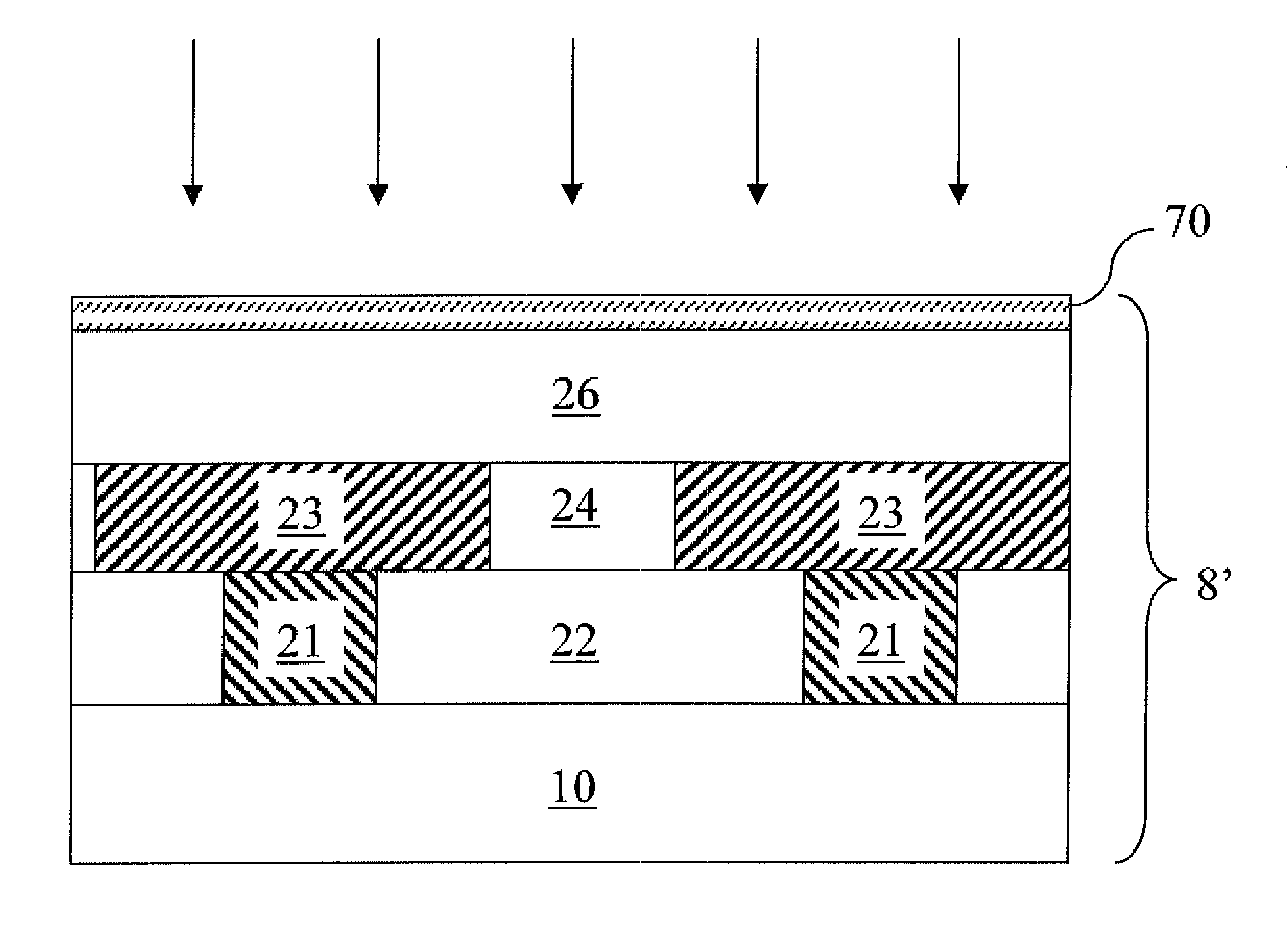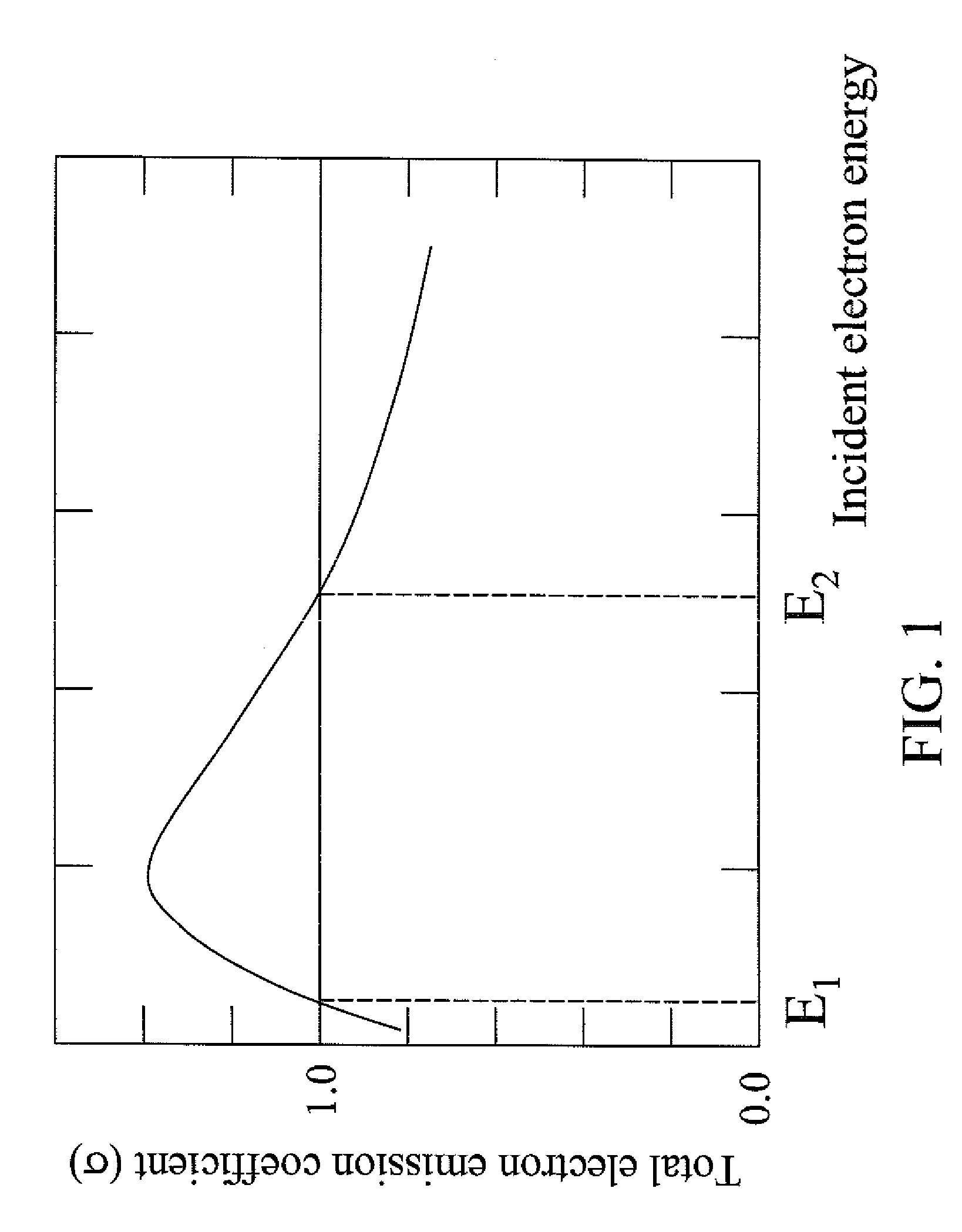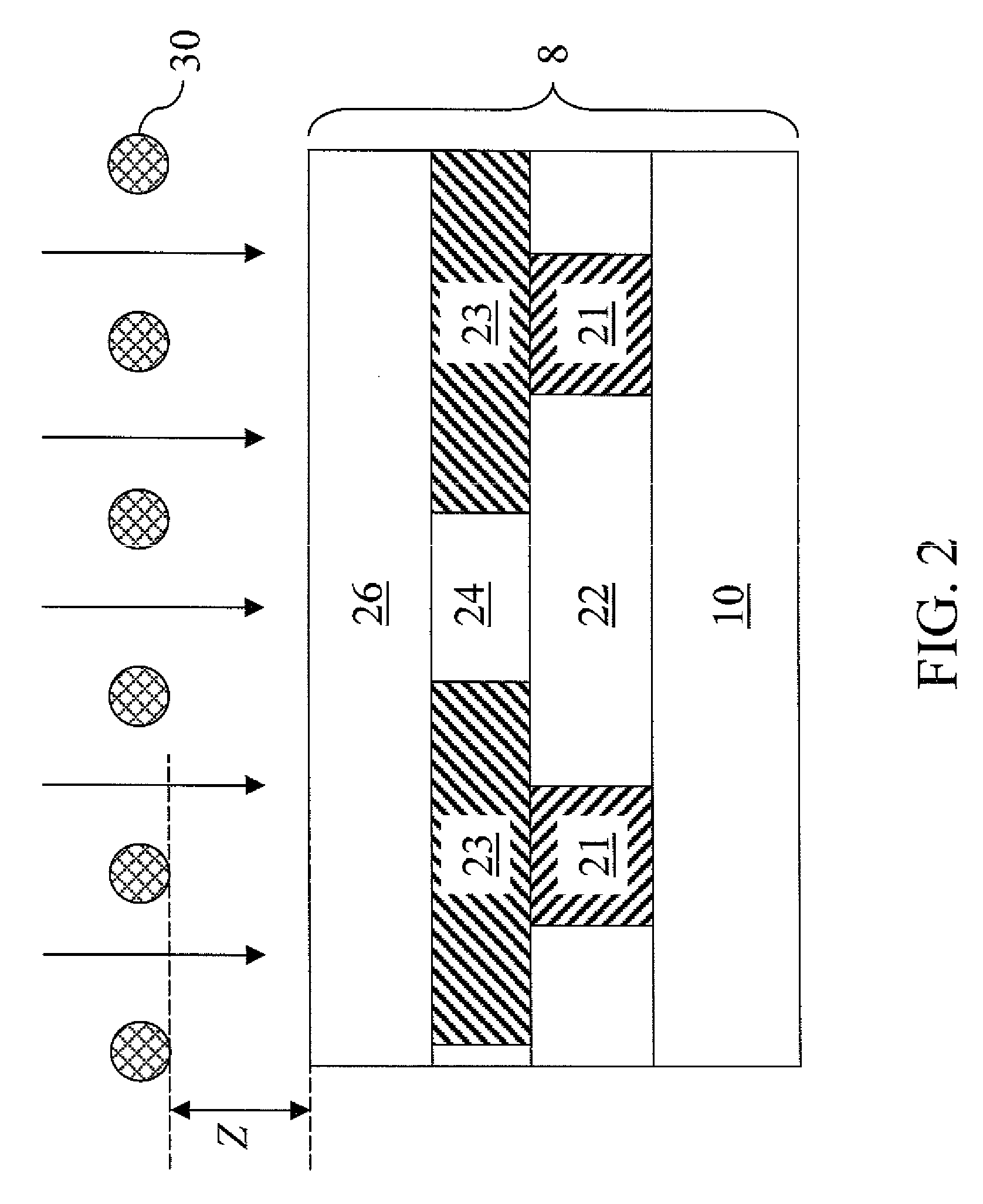Charging-free electron beam cure of dielectric material
a dielectric material and electron beam treatment technology, applied in the direction of calibration apparatus, optical radiation measurement, instruments, etc., can solve the problems of affecting the operation speed of the overall chip, the undesirable side effects of electron beam treatment on the front-end of the line device, and the tendency of ultra-low-k materials to crack, etc., to achieve the effect of reducing the undesirable charging effect of e-beam curing, increasing young's modulus and hardness
- Summary
- Abstract
- Description
- Claims
- Application Information
AI Technical Summary
Benefits of technology
Problems solved by technology
Method used
Image
Examples
Embodiment Construction
[0065]As stated above, the present invention relates to methods of electron beam curing of dielectric materials. It is noted that like and corresponding elements mentioned herein and illustrated in the drawings are referred to by like reference numerals.
[0066]In the past, electron beams have been used to charge conducting pads and vias in a ceramic package in order to test their electrical conductor continuity (J. M. Engel and F. E. Holmstrom J. Phys. D 3, 1505, (1970); J. M. Sebeson J. Vac. Sci and Technol. 6, 1060, (1973); Pfeiffer et al. J. Vac. Sci and Technol. 19, 1014, (1981); Lee et al. J. Vac. Sci and Technol. B 9, 1993, (1991)). In one of the steps of this charging and testing method, a conducting grid placed in the proximity of a sample surface was used to induce repeatable charging of the sample. According to the present invention, a conducting grid placed in the proximity of a dielectric layer that is subjected to an e-beam cure is electrically biased in order to ensure ...
PUM
| Property | Measurement | Unit |
|---|---|---|
| dielectric constant | aaaaa | aaaaa |
| energy | aaaaa | aaaaa |
| frequencies | aaaaa | aaaaa |
Abstract
Description
Claims
Application Information
 Login to View More
Login to View More - R&D
- Intellectual Property
- Life Sciences
- Materials
- Tech Scout
- Unparalleled Data Quality
- Higher Quality Content
- 60% Fewer Hallucinations
Browse by: Latest US Patents, China's latest patents, Technical Efficacy Thesaurus, Application Domain, Technology Topic, Popular Technical Reports.
© 2025 PatSnap. All rights reserved.Legal|Privacy policy|Modern Slavery Act Transparency Statement|Sitemap|About US| Contact US: help@patsnap.com



